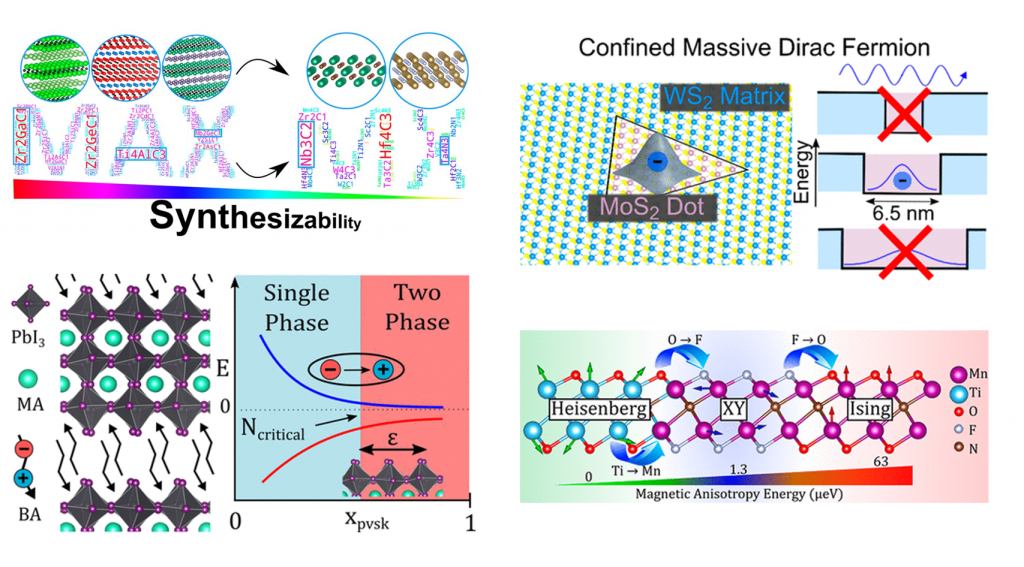Nano and Energy Materials

Nanomaterials that host emergent quantum phases are building blocks for solid-state devices with applications in quantum information science and nonvolatile memory. Layered nanomaterials are electrically and optically accessible, easily incorporated into novel heterostructures, and may have exotic properties due to interfacial effects. However, due to the importance of both atomic-scale phenomena and long-range interactions over length scales of hundreds of nanometers, it remains extremely challenging to engineer these materials. To better understand and engineer these systems, we combine atomic-scale simulation methods and machine learning with continuum or mesoscale theories and adapt insights from condensed matter physics, solid mechanics, chemistry, materials science and applied mathematics.
Relevant contributions and publications:
C. Price, J. Blancon, A. Mohite, V. B. Shenoy
Interfacial Electromechanics Predicts Phase Behavior of 2D Hybrid Halide Perovskites
ACS NANO, 14(3): 3353-3364, 2020
A. Bandyopadhyay, N. C. Frey, D. Jariwala, V. B. Shenoy
Engineering Magnetic Phases in 2D non-van der Waals Transition Metal Oxides
NANO LETTERS, 19(11): 7793-7800, 2019
C. Price*, N. Frey*, D. Jariwala, and V. B. Shenoy
Engineering Zero-Dimensional Quantum Confinement in Transition Metal Dichalcogenide Heterostructures
ACS NANO, 13(7): 8303-8311, 2019
N. C. Frey, J. Wang, G. Bellido, B. Anasori, Y. Gogotsi and V. B. Shenoy
Prediction of Synthesis of 2D Metal Carbides and Nitrides (MXenes) and Their Precursors with Positive and Unlabeled Machine Learning
ACS NANO, 13(3): 3031-3041, 2019
D. Er, H. Ye, N. C. Frey, H. Kumar, J. Lou, and V. B. Shenoy
Prediction of Enhanced Catalytic Activity for Hydrogen Evolution Reaction in Janus Transitional Metal Dichalcogenides
NANO LETTERS, 18(6): 3943-3949, 2018